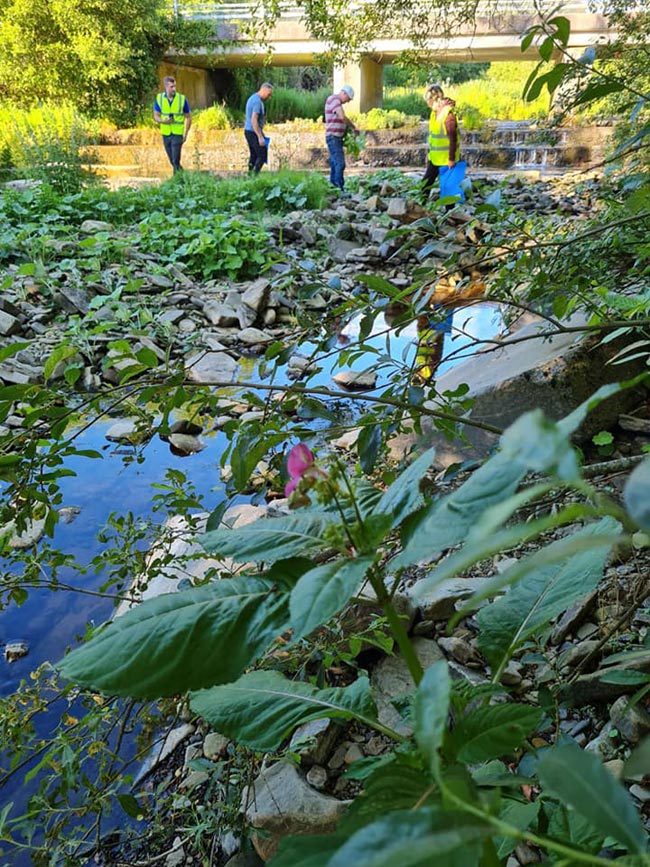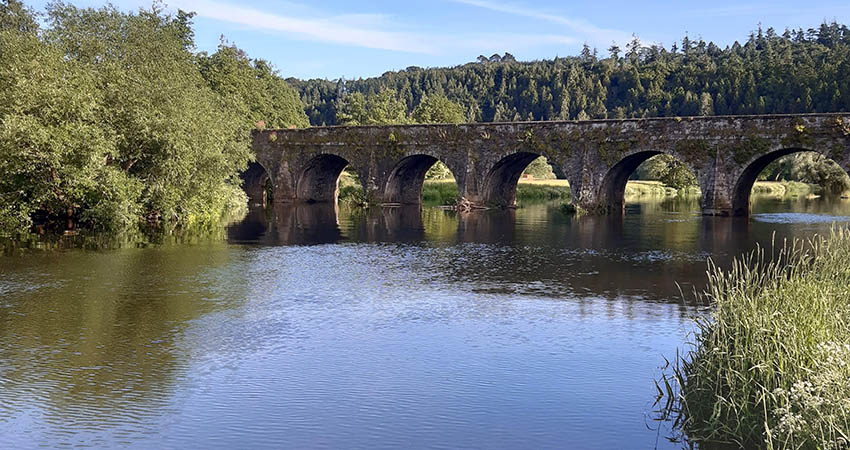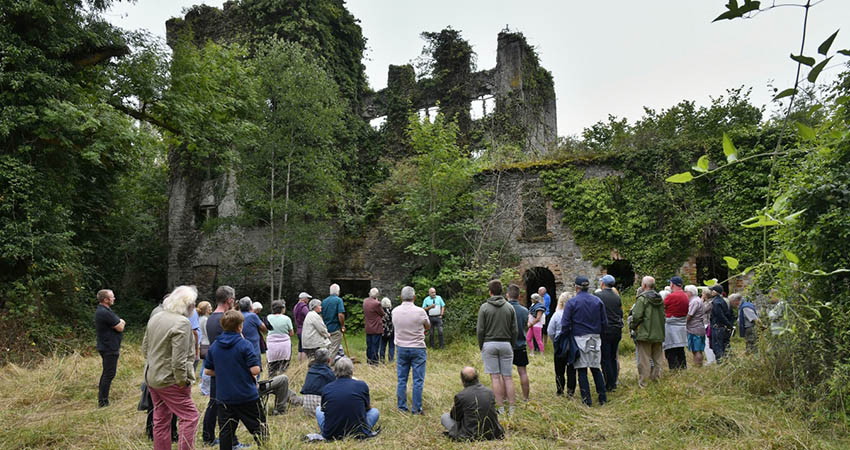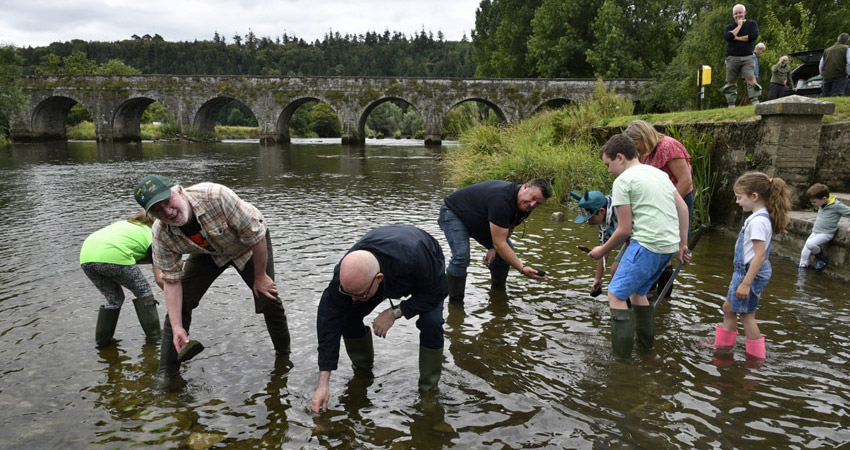Invasive Species
Himalyan Balsam Impatiens glendulifera is at first glance an attractive plant that grows along rivers or at the edge of damp woodlands in Ireland. In recent years it has spread along the Nore and now forms large tracks in some areas.
The plant is native to the western Himalayas but is now invasive in many parts of continental Europe. It can form dense stands where individual plants can reach 2m in height blocking out native species.
The stems grow upright, are easily broken and are usually purple in colour with many large oval-shaped pointed leaves. The flowers can vary in colour but are usually shades of white, pink or purple and are easily recognisable. Flowering usually takes place between June to October
Seed capsules arise when the flowers are mature and when ripe the slightest touch causes these fruits to split open explosively dispersing seeds up to 20 feet from the parent plant. Plants can bear up to 800 seeds each combined with their dramatic dispersal method, makes them very prolific as they can be easily be spread further by water, animals and humans.
From October onwards, the plants die back leaving soil more exposed to erosion due to its very short root system and compounded by the loss of native plants earlier in the growing season.
In recent years Keep Kilkenny Beautiful, Nore Vision, Trail Kilkenny, Thomastown Weir Trust and other groups have worked to remove the plant. Due to its relatively small root system, the plant can be easily pulled up. It’s essential that this work is done before the seeds appear which is usually in late July. Nore Vision has delivered training on invasive species through out the catchment over the last number of years. We are currently mapping Himalyan Balsam through the catchment so we can co-ordinate and effectively manage the species. If you know of any stands of the plant please get in touch with us.
The National Biodiversity Data Centre (NBDC) is the organisation that collects and manages data on Irelands biodiversity. They document our wildlife resources and track changes over time. We encourage everyone to contribute their work by recording sightings of both invasive and native species. These sightings can be easily uploaded to the NBDC app. Check out www.biodiversityireland.ie for more details.
Giant Hogweed Heracleum mantagazzianum is another invasive species to watch out for. We received a number of reports of it presence along the Nore in 2022. We worked with Trail Kilkenny, Keep Kilkenny Beautiful and NPWS on its removal. If you see Giant Hogweed, Please do not touch this plant. It causes very serious skin irritation. Record on the NBDC app and get in touch with us.





